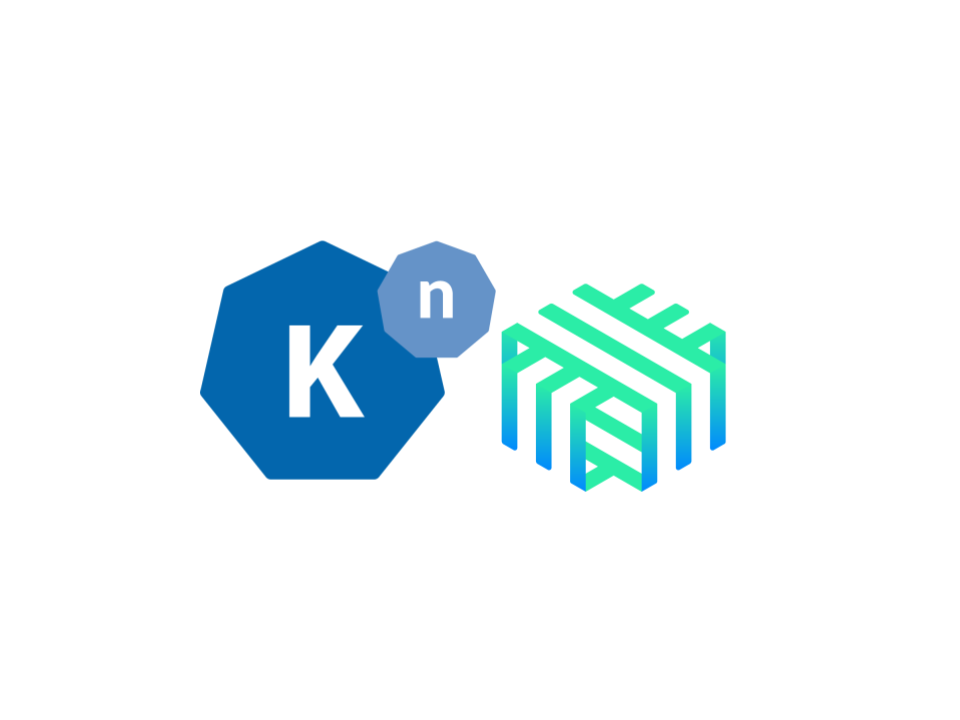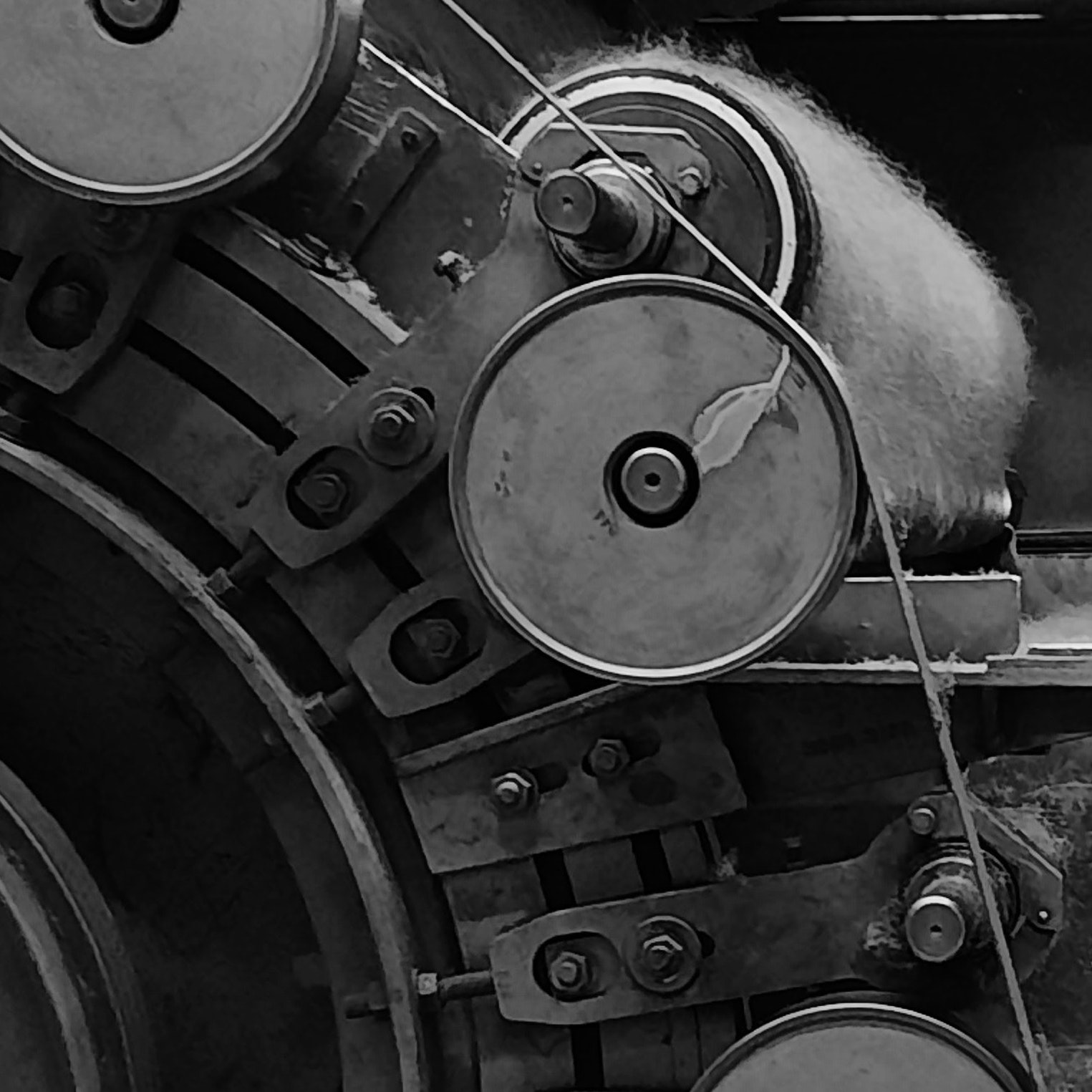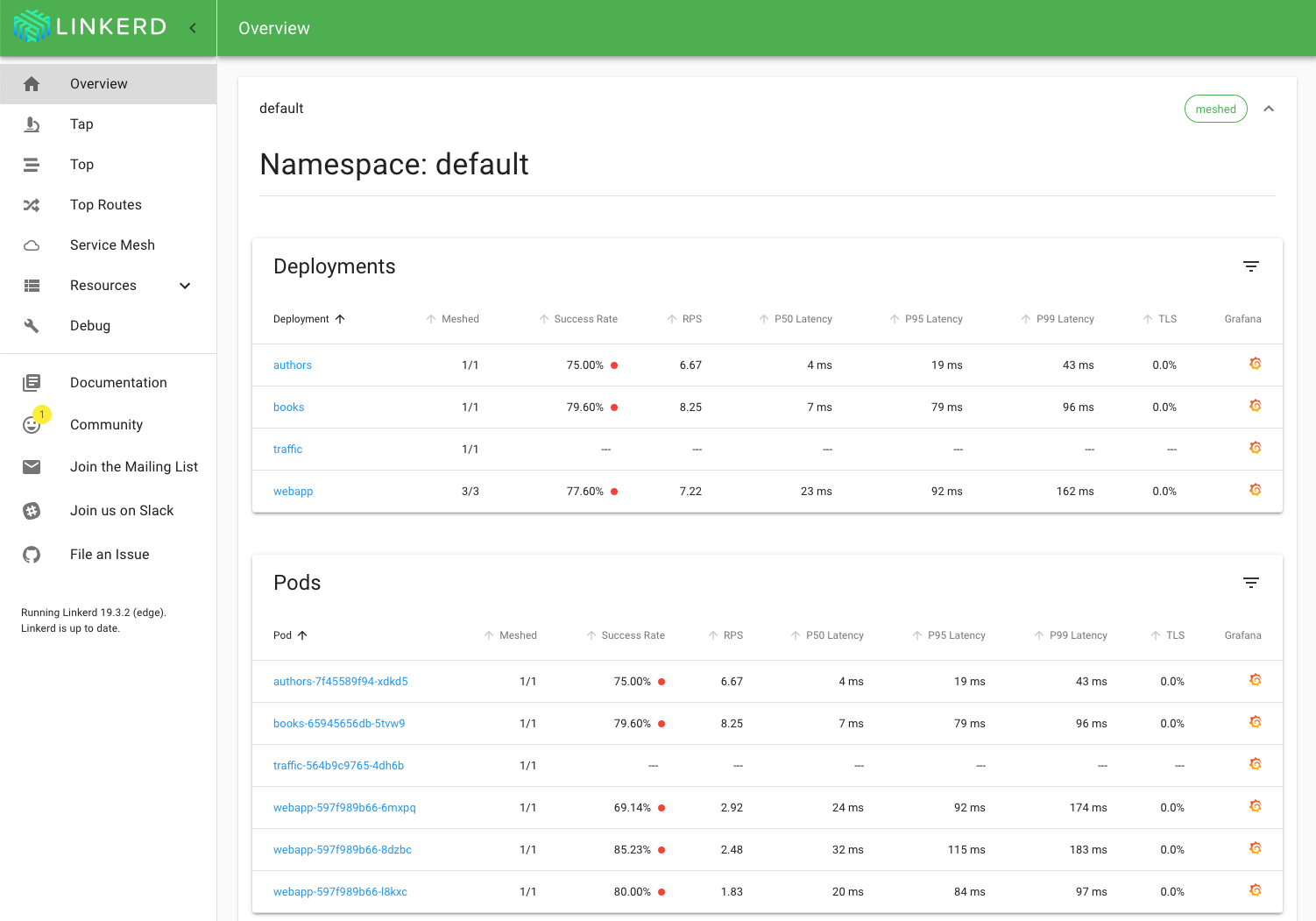

Certain questions about Kubernetes and Linkerd seem to come up again and again:
- What’s up with this init container stuff?
- What’s a CNI plugin?
- Why is Kubernetes complaining about pods not finishing initialization?
- Is there something special I need to do to run Linkerd with Cilium/etc?
- Why is all this stuff so complicated?
Under the hood, these are really all the same question: When we’re using Linkerd, what really happens when a Pod starts running? So let’s shed some light on that.
Kubernetes Without Linkerd
Kubernetes is a complex system with a simple overall purpose: run user workloads in a way that permits the authors of the workloads to not care (much) about the messy details of the hardware underneath. The workload authors are supposed to be able to just focus on Pods and Services; in turn, Kubernetes is meant to arrange things such that workloads get mapped to Pods, Pods get deployed on Nodes, and the network in between looks flat and transparent.
This is simple to state, but extremely complex to implement in practice. (This is an area where Kubernetes is doing a great job of making things complex for the Kubernetes implementors so that they can be easier for the users – nicely done!) Under the hood, Kubernetes is leaning heavily on a number of technologies to make all this happen.
Note that in this section, I’m talking about Kubernetes when Linkerd is not running. This is basic Kubernetes (if “basic” is really a word one can apply here).
Clusters and cgroups and Pods, oh my!
The first major area that Kubernetes has to manage is actually running the workloads within the cluster. It relies heavily on OS-level isolation mechanisms for this:
Clusters are composed of one of more Nodes, which are (possibly virtualized) machines. For this article, we’ll be talking about Linux Nodes.
Since different Nodes are different machines (virtual or physical), everything on one Node is isolated from all other Nodes.
Pods are composed of one or more containers, all of which are isolated from one another within the same Node using Linux
cgroups andnamespaces.It’s worth noting that Linux itself runs at the Node level. Pods and containers don’t have distinct copies of the operating system, which is why isolation between them is such a big deal.
This multi-layer approach gives Kubernetes a way to orchestrate which workloads run where within the cluster, and to keep track of resource availability and consumption: workload containers are mapped to Pods, Pods are scheduled onto Nodes, and Nodes are all connected to a network.
Deployments, ReplicaSets, DaemonSets, etc., are all bookkeeping mechanisms for figuring out exactly which Pods gets scheduled onto which Nodes, but the fundamental scheduling mechanism is the same across all of them.
Kubernetes Networking
The other major area that Kubernetes has to manage is the network. Kubernetes requires that Pods see a network that is flat and transparent: every Pod must be able to directly communicate with every other Pod, whether on the same Node or not. This implies that each Pod has to have its own IP address, which I’ll call a Pod IP in a fit of originality.
(Technically, any container within a Pod must be able to talk to containers in other Pods – but these IP addresses exist at the Pod level, not the container level. Multiple containers in one Pod share the same IP address.)
You could write a workload to use Pod IPs directly to talk to other workloads, but it’s not a good idea: Pod IPs change as Pods go up and down. Instead, we generally refer to workloads using a Kubernetes Service. Services are actually fairly complex (even though I’m glossing over headless Services and such here!):
A Service causes a DNS entry to be allocated, so that workloads can refer to the Service using a name.
The Service also allocates a Cluster IP address for the Service, which refers only to this Service and is distinct from any other IP address in the cluster. (I’m calling it a Cluster IP to reinforce the idea that it is not tied to a single Pod.)
The Service also defines a selector, which defines which Pods will be matched with the Service.
Finally, the Service collects the Pod IP addresses of all the Pods it matches, and keeps track of them as its endpoints.
(Again: I’m deliberately glossing over headless Services and other kinds of Services without selectors here, and focusing on the more common case.)
When a workload tries to connect to the Cluster IP belonging to a Service, by default Kubernetes will pick one of the Service’s endpoints, and route the connection there (remember that the Service endpoints are Pod IP addresses). In this way, Services do simple load balancing at the connection level.
It should be fairly apparent from all this that there is a lot of networking magic happening in Kubernetes. This is all handled by the low-level firewall built into the Linux kernel.
IPTables
The Linux kernel contains a fairly powerful mechanism to examine network
traffic at the packet level and make decisions about what to do with each
packet. This might involve letting the packet continue on unchanged, altering
the packet, redirecting the packet, or even dropping the packet entirely. I’m
going to refer to the whole of this mechanism as IPTables – technically,
that’s the name of an early implementation, but we tend to use it to refer to
the whole mechanism around Buoyant, so I’ll stick with it. (And if you think
this sounds like something you might do with eBPF, you’re right! This is an
area where eBPF shines, although many implementations of this mechanism
predate eBPF and don’t depend on it.)
What this means is that Kubernetes can - and does - use IPTables to handle
the complex, dynamic routing that it needs for network traffic within the
cluster. For example, IPTables can catch a packet being sent to a Service’s
Cluster IP address and rewrite it to instead go to a specific Pod IP address;
likewise, it can know the difference between a Pod IP address on the same Node
as the sender and a Pod IP address on a different Node, and manage routing to
make everything work out. In turn, this requires Kubernetes to constantly
update the IPTables rules as Pods are created and destroyed.
The Container Networking Interface
The specific way that a given Kubernetes implementation needs to update the network configuration depends on the details of the implementation. The Kubernetes Container Networking Interface, or CNI, is a standard that tries to provide a uniform interface for implementors to request network-configuration changes, to make Kubernetes easier to port.
A critical aspect of the CNI is that it allows for CNI plugins, which - in
turn - can permit swapping out the network layer even while keeping the rest
of the Kubernetes implementation the same. For example, k3d uses
Flannel as its networking layer by
default, but it’s easy to switch it to use
Calico instead.
Kubernetes Pod Startup
Putting it all together, here’s how Kubernetes handles things when a Pod starts.
- Find a Node to run the new Pod.
- Execute any CNI plugins defined by the Node, in the context of the new Pod. Fail if any don’t work.
- Execute any init containers defined for the new Pod, in order. Fail if any don’t work.
- Start all the containers defined by the Pod.
When starting the Pod’s containers, it’s important to note that they will be
started in the order defined by the Pod’s spec, but that normally Kubernetes
will not wait for a given container before proceeding to the next container.
However, if the container defines a postStartHook, Kubernetes will start the
container, then run the postStartHook to completion, before starting the
next container.
Kubernetes with Linkerd
When running with Linkerd, everything above is still true, but there are additional complications.
First, Linkerd needs to inject its proxy into application Pods, and the proxy needs to intercept network traffic into and out of the Pod. The first is taken care of with a mutating admission controller. The second, though, is more complex, and Linkerd can manage it ising an init container, or using a CNI plugin.
Even after that, there are ordering concerns and race conditions.
The Init Container
The simplest way that Linkerd can inject its proxy is using an init container.
Kubernetes guarantees that all init containers run to completion, in the order
that they are listed in the Pod’s spec, before any other containers start.
This makes the init container a straightforward place to configure IPTables.
The downside of the init container is that it requires the NET_ADMIN
capability in order to be allowed to do the configuration it needs to do – and
in many Kubernetes runtimes, this capability is simply not available. In these
situations, you’ll need to use the Linkerd CNI plugin.
Also, the OS used in some Kubernetes cluster may not support the legacy
IPTables used by default in Linkerd (typically, this will be a factor in the
Red Hat family). In those cases, you’ll need to set
proxyInit.iptablesMode=nft to have Linkerd use iptables-nft instead. (This
is not the default because iptables-nft isn’t yet supported everywhere.)
The Linkerd CNI Plugin
The Linkerd CNI plugin, by contrast, doesn’t require any special capability –
it just requires that you’ve installed Linkerd’s CNI plugin before installing
Linkerd. The CNI plugin will run when every pod starts, configuring IPTables
as needed.
It’s important to note that the CNI makes the tacit assumption that the cluster operator will be the one maintaining the list of CNI plugins and setting their order. However, Linkerd is explicitly designed to be usable in any cluster, whether the cluster operator installed Linkerd ahead of time or not. So instead of requiring the cluster operator to manage Linkerd’s CNI plugin, Linkerd actually installs a DaemonSet that tries to make certain that the Linkerd CNI plugin is always run last – this gives other plugins the opportunity to configure what they need before Linkerd does the final tweak to have the Linkerd proxy intercept traffic.
Linkerd will still inject an init container when using the CNI plugin. If
you’re using Linkerd prior to edge-22.10.3, it will inject a no-op init
container that (as its name implies) really doesn’t do much of anything. As of
edge-22.10.3, though, the init container will validate that IPTables is
really configured correctly: if not, it will fail, and allow Kubernetes to
restart the Pod. This eliminates a startup race. (edge-22.10.3 will be
incorporated into stable-2.13.0.)
Races and Ordering
Obviously, startup can be complex in Kubernetes! As such, there are several ways that things can get out of synch.
Container Ordering
As noted above, containers are started in the order in which they’re listed in
the Pod’s spec. However, while an init container must run to completion
before the next is started, this doesn’t apply to normal containers:
Kubernetes will not usually wait for a given container before proceeding to
the next.
This can be a problem during Linkerd startup – suppose the application container starts running and tries to talk on the network before the Linkerd proxy container is running?
As of Linkerd 2.12, the proxy injector defaults to using a postStartHook on
the Linkerd proxy container to avoid this issue. When a postStartHook is
present on a container, Kubernetes will:
- Start the container, then
- Run the
postStartHook, then - Wait for the
postStartHookto complete before starting the next container.
The postStartHook that Linkerd uses for the Linkerd proxy container won’t
complete until the proxy is actually running, which guarantees that the
application container can’t start running before the proxy is functioning. You
can disable this functionality, if needed, by setting the annotation
config.linkerd.io/proxy-await=disabled – however, we recommend leaving it
enabled unless you have a truly compelling reason!
CNI Plugin Ordering
There are a few different ways CNI plugin ordering can confuse things.
DaemonSets vs Other Pods: DaemonSet Pods don’t get any special treatment during scheduling, which means that it’s entirely possible for an application Pod to get scheduled before the Linkerd CNI DaemonSet installs the Linkerd CNI plugin! This means that the Linkerd CNI plugin won’t run for the application Pod, which in turn means that the application container(s) will not have a functioning Linkerd proxy.
Before Linkerd edge-22.10.3, the end result is that the application Pod will
never appear in the mesh. As noted earlier, though, as of edge-22.10.3,
the init container will validate that IPTables has been configured
correctly. If it hasn’t been, the init container will exit. Kubernetes will
view this as a crash-loop in the init container, and you’ll be able to see the failure.
Multiple CNI Plugins: It’s common for more than one CNI plugin to be present in the cluster. As noted above, the Linkerd CNI DaemonSet tries very hard to put the Linkerd CNI plugin last, and to do no harm to other CNI plugins – if either of these things goes wrong, though, the most likely outcome is once again that an application Pod will start without a functioning proxy.
Misconfigured CNI: It’s also possible for the CNI plugin to be
misconfigured in the first place. For example, when installing the Linkerd CNI
plugin on K3d, it’s possible to install the CNI plugin with the wrong paths,
in which case it won’t function. Errors like this may result in application
Pods silently failing to come up, or you may also see “corrupt message” errors
in the proxy logs:
{ "message": "Failed to connect", "error": "received corrupt message" }Common Failure Modes: The “good” news, if we can call it that, is that CNI
issues are typically not subtle. linkerd check will fail, Pods won’t
start, things tend to break very very visibly.
The less-good news is the debugging CNI issues can be complex, and highly dependent on the actual CNI involved. This is outside the scope of this article, though we may return to it later!
Summary
The Kubernetes startup sequence can be very complex, but Linkerd tries hard to help keep it as simple as possible. Some recommendations to (hopefully) take advantage of that effort:
Keep Linkerd up to date! There are a couple of very, very useful things described above that you’ll note are only present in very recent versions.
Keep
proxy-awaitenabled. This will permit Linkerd to make sure that your application code doesn’t start before the Linkerd proxy does, which sidesteps a whole class of startup issues.Don’t be afraid of init containers – if your cluster allows it, the simplicity of the init container can be very nice.
Don’t be afraid of the CNI either. There’s a place for both.
For a closer look, you can also check out the Service Mesh Academy workshop for hands-on exploration of everything I’ve talked about here. Hopefully this article has helped shed some light on the whole startup topic!




